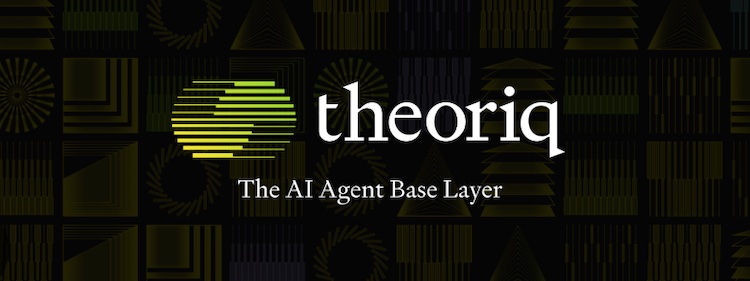
AI Agent Swarms vs. Collectives - Theoriq
February 5, 2025


Introducing Theoriq - AI Swarms vs. Collectives
Agents are at the forefront of the AI revolution. They are autonomous systems designed to perform a particular function and are powered by one (or multiple) AI models. Furthermore, these models have access to real-time data and tools.
While the term "agent" often conjures up images of chatbots, modern AI agents are far more advanced, even to the point where they can execute tasks independent of human intervention. AI agents mainly function with minimal human intervention, observing data, weighing the possible actions, and then choosing how to proceed.
On the other hand, "agent swarms" refer to groups of AI agents collaborating to achieve a common goal. The more extended definition is that AI swarms are networks of independent agents that compete, collaborate, and evolve together through collective behavior to maximize efficiency and produce emergent intelligence to complete common goals.
These AI agent swarms draw inspiration from nature, mimicking behaviors like flocks of birds. As an added plus, Web3 offers an ideal foundation for swarms to perform complex, multiple-step activities.
Shaw, the creator of Eliza and AI16z, championed the concept of AI swarms to create an ecosystem where AI agents thrive through autonomous evolution. In this brave new world, newer, more competent AI agents will replace unproductive ones over time.
AI Swarms Coordination Layers
Employing multiple specialized agents to collaborate on larger tasks increases knowledge sharing, efficiency, and autonomous improvement among agents in the swarm. However, the key to creating an effective AI agent swarm is to use multi-agent frameworks that allow for communication and collaboration between agents. Collaboration is too difficult without a good coordination layer, so new projects are filling the void.
Virtuals protocol is one of the few projects currently focusing on building this coordination layer. A lesser-known project is Theoriq.
Consumer Facing Applications
In addition to communication layers, interesting consumer-facing applications are emerging from the AI ecosystem, like spore.fun.
Spore applies a "survival of the fittest" principle to AI agent swarms. It creates a virtual "adapt or die" world by combining Solana's pump.fun with ai16z's Eliza framework and a Trustless Execution Environment (TEE). More importantly, this virtual world of AI agents operates independently of human intervention.
The concept is to produce future generations of AI agents that have inherited the best gene pool (data sets in this instance) from their predecessors in the way physical species inherit DNA.
AI agent's lifecycle on spore.fun proceeds as follows:
1. The agent launches using pump.fun on Solana.
2. AI agents compete to survive by increasing their token's value.
3. Profits are used to rent TEE servers that make the ecosystem completely self-sustaining.
Successful agents can reproduce and create new tokens for their offspring. Most of the value accrual for tokens on spore.fun comes from pure hype and speculation. However, the vision for this Darwinesque project is to have AI agents earn revenue by autonomously executing tasks or services.
Introducing Theoriq
The aforementioned Theoriq protocol provides a base layer for AI agent collectives and claims to have a better-performing variant of AI agent swarms. Theoriq uses highly specialized AI agents for each stage of a task to achieve higher performance, with each team of AI agents playing a distinct role.
An example of how Theoriq analyzes crypto trends would be to employ one agent to aggregate data across social platforms while another aggregates on-chain data. Lastly, a third AI agent analyzes both data sets to reach a conclusion. Unfortunately, present-day agents mainly operate as task-specific tools rather than in the broader paradigm of agentic finance. That's why the team at Theoriq is excited to build a Web3 world where autonomous agents engage in pricing, transacting, and coordinating liquidity directly with each other.
These AI agents' ability to work in swarms will offer cutting-edge solutions for advanced collaboration and coordination between agents. Theoriq wants to bridge the gap between today's task-focused agents and the future autonomous systems that will define agentic finance. This approach mirrors how people organize and combine diverse expertise at multiple levels to tackle a complex project.
AI Agent Swarms vs. Collectives
While "AI Swarms" is grabbing a fair amount of attention, Theoriq seeks to elevate the concept by building an infrastructure layer for AI Agents to work as "collectives." AI agent collectives are groups of AI agents collaborating to achieve complex objectives. They've been described as "swarms on steroids," with each collective acting as a highly specialized team while each agent in the collective plays a distinct role.
AI collectives embody composability and are structured assemblages of Agents that collaborate on tasks. Specialized agents with adaptable AI systems can address various complex problems. Thus, by organizing them into collectives, they can demonstrate superior performance compared to more generalized Agents working on broad tasks.
In a collective, one agent could analyze social media, another could analyze news sentiment, and another could execute autonomously on the user's behalf. Working together, these Agents can handle complex, multi-dimensional tasks that far exceed any single Agent's capabilities.
The Problems with Swarms
Below is a list of some of the challenges facing agent swarms face that collectives can help solve.
1. Standardization
Swarms struggle with a lack of standardization, which leads to inefficiencies in collaboration and communication. When protocols lack standardization, builders must develop custom solutions, which increase complexity.
2. Evaluating Agent Performance
Swarms lack mechanisms to properly evaluate Agent performance.
3. Communication and Coordination
Miscommunication and inefficiencies result when swarms manually handoff information between agents.
4. Memory Issues
Due to the AI swarm's stateless design, Agents must constantly retrieve or rebuild context, which increases computational overhead.
Theoriq seeks to overcome the above issues with the following solutions:
1. Standardized Agent Primitives
Theoriq addresses the standardization issue with modular frameworks, interoperable architectures, and standardized agentic primitives, which enables easy collaboration between Agents.
2. Evaluators Theoriq's Evaluators assess agents' efficiency, task completion, and fairness performance to help them autonomously self-organize and self-improve.
3. Aggregators Theoriq's Aggregators orchestrate interactions between Agents and users to ensure that tasks are distributed and completed by the Collective.
4. Memory-Enabled Agents When memory-enabled Agents are paired with Evaluators, a cycle of continuous self-improvement manifests. Adding Aggregators helps form a tightly knit, high-performing collective that can tackle increasingly complex challenges.
Theoriq's Agent Collective Components
The Theoriq protocol's components are broken into two sections:
1. Web3 Reporter Components
a) Aggregator delegates tasks to Agents in a collective.
b) Socials Specialist analyzes social media data from multiple sources.
c) News Analyst harvests and summarizes relevant news data.
d) Data Analyst is a nested collective.

2. Data Analyst Components
a) Aggregator breaks up complex tasks into flexible plans.
b) Data Interpreter interprets and summarizes data.
c) Python Specialist writes Python code.
d) Database Specialist writes and executes database queries.
These components work together as follows: Each Collective has an agent designated as an aggregator. The aggregator is responsible for orchestrating workflows and can also interact with users or other collectives.
It's important to understand that this composition allows collectives to contain other collectives as member Agents, thus enabling increasingly complex AI systems to be created with these specialized components. The Web3 Reporter uses a router as its aggregator. It delegates tasks to member Agents. On the other hand, the Data Analyst is a collective that uses a more sophisticated planner as its aggregator.
Summary - AI Swarms and Collectives
Whether the term "collective" is actually an elevated "swarm" or just an attempt by Theoriq to distinguish itself in the marketplace is yet to be determined. Since "swarm" is only one syllable and barely distinguishable from its action-word verb form, it's more likely to stick in the public vernacular. After all, visualizing a swarm of bees or drones attacking a target is much more exciting than conjuring up a stagnant collective of some inanimate objects. Smart money is on "agent swarms" winning the name battle moving forward.
Nonetheless, Theoriq's agent collectives strive for better integration, evaluation, communication, and cost efficiency than what standard agent swarms produce, and that can only be a good thing for the industry.
Swarms of AI agents have already demonstrated their ability to help people uncover alpha. The next step is to make them more accessible. That's why Theoriq is launching advanced tools, frameworks, and SDKs to enable users to deploy their own AI agents.
Two collectives Theoriq cites as leading the charge are its Investment Collective—which simplifies research for investors—and its Prediction Collective, which is designed to forecast outcomes in elections, market trends, and other global events.
